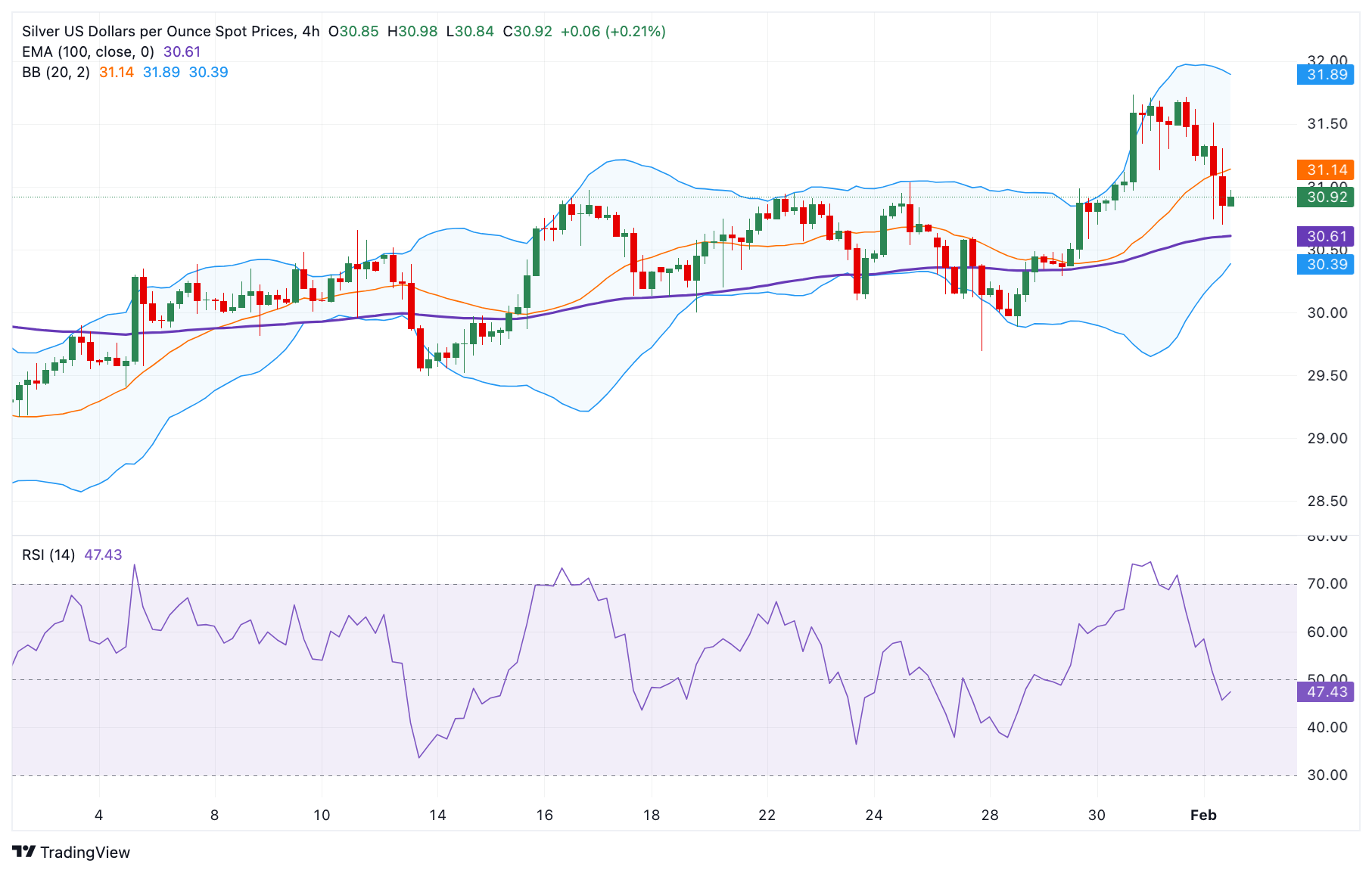Silver Price Forecast: XAG/USD retreats below $31.00 as US Dollar climbs on Trump tariffs
- Silver price loses ground to around $30.90 in Monday’s early European session, losing 1.30% on the day.
- The positive view of silver prevails above the 100-period EMA with a neutral RSI indicator.
- The initial support level is located at $30.60; the immediate resistance level is seen at $31.72.
The Silver price (XAG/USD) tumbles to near $30.90 during the early European trading hours on Monday. The mounting fears of a global trade war following US President Donald Trump's sweeping tariff measures boost the US Dollar (USD) broadly and exerts some selling pressure on the white metal.
According to the 4-hour chart, the bullish outlook of the white metal remains intact, with the price holding above the key 100-period Exponential Moving Averages (EMA). Nonetheless, the Relative Strength Index (RSI) hovers around the midline, suggesting that further consolidation cannot be ruled out.
The first downside target is located at $30.60, the 100-period EMA. Further south, the next contention level to watch is $30.40, the lower limit of the Bollinger Band. Extended losses will pave the way to the $30.00, psychological level, en route to $29.50, the low of January 13.
In the bullish case, the immediate resistance level emerges at $31.72, the high of January 31. The next hurdle is seen at the $31.90-$32.00 region, representing the upper limit of the Bollinger Band and the round mark.
Silver price 4-hour chart

Silver FAQs
Silver is a precious metal highly traded among investors. It has been historically used as a store of value and a medium of exchange. Although less popular than Gold, traders may turn to Silver to diversify their investment portfolio, for its intrinsic value or as a potential hedge during high-inflation periods. Investors can buy physical Silver, in coins or in bars, or trade it through vehicles such as Exchange Traded Funds, which track its price on international markets.
Silver prices can move due to a wide range of factors. Geopolitical instability or fears of a deep recession can make Silver price escalate due to its safe-haven status, although to a lesser extent than Gold's. As a yieldless asset, Silver tends to rise with lower interest rates. Its moves also depend on how the US Dollar (USD) behaves as the asset is priced in dollars (XAG/USD). A strong Dollar tends to keep the price of Silver at bay, whereas a weaker Dollar is likely to propel prices up. Other factors such as investment demand, mining supply – Silver is much more abundant than Gold – and recycling rates can also affect prices.
Silver is widely used in industry, particularly in sectors such as electronics or solar energy, as it has one of the highest electric conductivity of all metals – more than Copper and Gold. A surge in demand can increase prices, while a decline tends to lower them. Dynamics in the US, Chinese and Indian economies can also contribute to price swings: for the US and particularly China, their big industrial sectors use Silver in various processes; in India, consumers’ demand for the precious metal for jewellery also plays a key role in setting prices.
Silver prices tend to follow Gold's moves. When Gold prices rise, Silver typically follows suit, as their status as safe-haven assets is similar. The Gold/Silver ratio, which shows the number of ounces of Silver needed to equal the value of one ounce of Gold, may help to determine the relative valuation between both metals. Some investors may consider a high ratio as an indicator that Silver is undervalued, or Gold is overvalued. On the contrary, a low ratio might suggest that Gold is undervalued relative to Silver.

